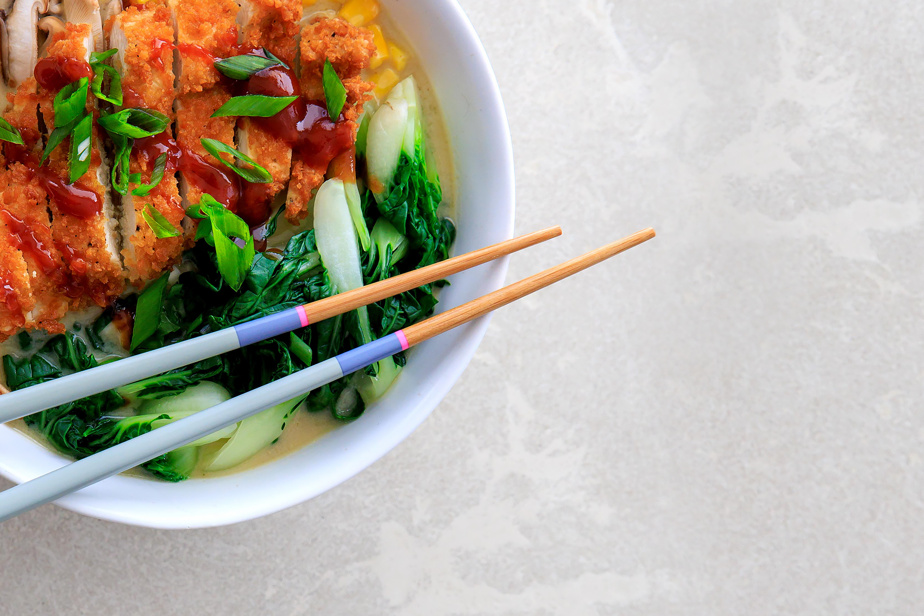1. Time

PHOTO ALAIN ROBERGE, THE PRESS
The secret: prepare plenty of broth so you have some in stock in your freezer.
As we’ve said, ramen, whether it’s its tasty broth or its varied toppings, takes time to prepare. So take some. You don’t decide to cook up a ramen from scratch on a Tuesday. A secret: prepare plenty of broth (dashi, base, etc.) when you start, to have reserves in the freezer when you suddenly want to eat it!
2. The basics

PHOTO ALAIN ROBERGE, THE PRESS
Among the essentials: noodles!
For a traditional recipe, five basic components are essential. First: the broth, which is often available in two stages, first with the famous dashi, then a second broth (typically chicken or pork, vegan options possible). Next, the noodles (ideally fresh or not fried). Without forgetting the toppings, but also oils. And finally, the defect. We use this basic sauce, very salty, just before pouring in the broth to slightly enhance the taste. Based on soy sauce, the tare allows you to measure the sodium.
3. Don’t panic

PHOTO ALAIN ROBERGE, THE PRESS
Hubert Cormier finds many of his ingredients online.
Are you already starting to wonder where the hell you’re going to find kombu or katsuobushi? “We don’t have to worry,” suggests Hubert Cormier, who doesn’t necessarily go to an Asian grocery store, but who orders a lot online (yes, on Amazon!).
4. The secret is in the umami

PHOTO ALAIN ROBERGE, THE PRESS
Umami is one of the five basic tastes after sweet, salty, bitter and sour.
Umami, also known as monosodium glutamate, is one of the five basic tastes after sweet, salty, bitter and sour. “It’s what provides the je ne sais quoi that the world loves so much in ramen!” », smiles Hubert Cormier. We typically owe it to dashi and its dried seaweed. Note that some hypersensitive people may react to it.
5. Oils

PHOTO ALAIN ROBERGE, THE PRESS
Tasty secret: aromatic oils
Whether you like them milder or spicy, flavored oils add a touch of extra flavor to the noodles. We add them as a final touch. Hubert Cormier prepares several in advance (leeks, roasted garlic), but you can also buy variations in the grocery store.
6. Ingredients to have on hand

PHOTO ALAIN ROBERGE, THE PRESS
Some essentials to have on hand
Some essentials to always have in stock (and treat yourself here, buy the most traditional brands possible): sesame oil, rice vinegar, soy sauce, chili paste, bean paste.
7. Essential chopsticks

PHOTO ALAIN ROBERGE, THE PRESS
Chopsticks, essential
Note that in terms of instruments, nothing is really essential to prepare your ramen, your usual utensils (ladle, sieve, mortar, etc.) should do the trick just fine. On the other hand, it is impossible to do without chopsticks (it is indeed frowned upon to take a fork, but very acceptable to make noise while slurping your soup!). Among other things to know: you don’t point at someone, you don’t cross them by putting them on your bowl and you certainly don’t stab your food with your chopsticks.
8. Clever garnishes

PHOTO ALAIN ROBERGE, THE PRESS
Narutomaki (on sale online!), to be cut into thin slices, add a nice touch to the bowl of soup.
It’s not pastry, our chef reminds us, so dare to improvise. Pork, fish balls, tofu, salmon, anything is possible. You don’t have snow peas, opt for bok choy, or vice versa. As a culinary decoration, Hubert Cormier suggests green onion whites cut into julienne strips, narutomaki (always in Asian grocery stores or on Amazon!) thinly sliced, soft-boiled eggs cut in half at the last minute or even baby sprouts. Menma bamboo (dried and fermented). Have fun !
